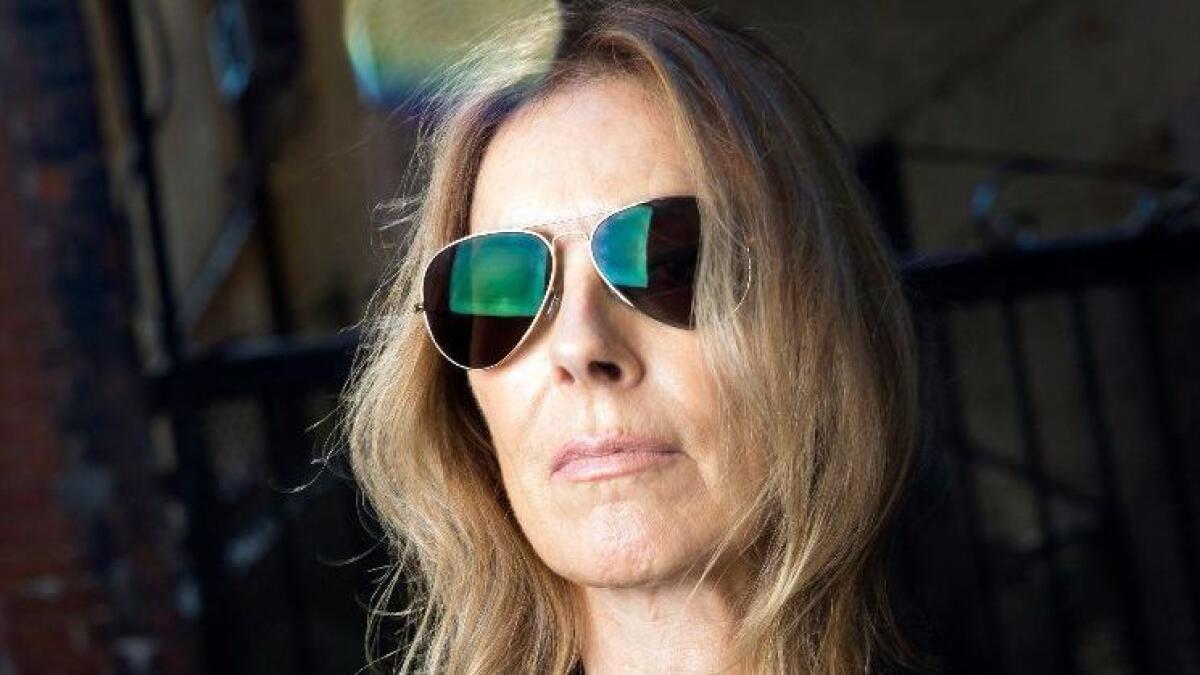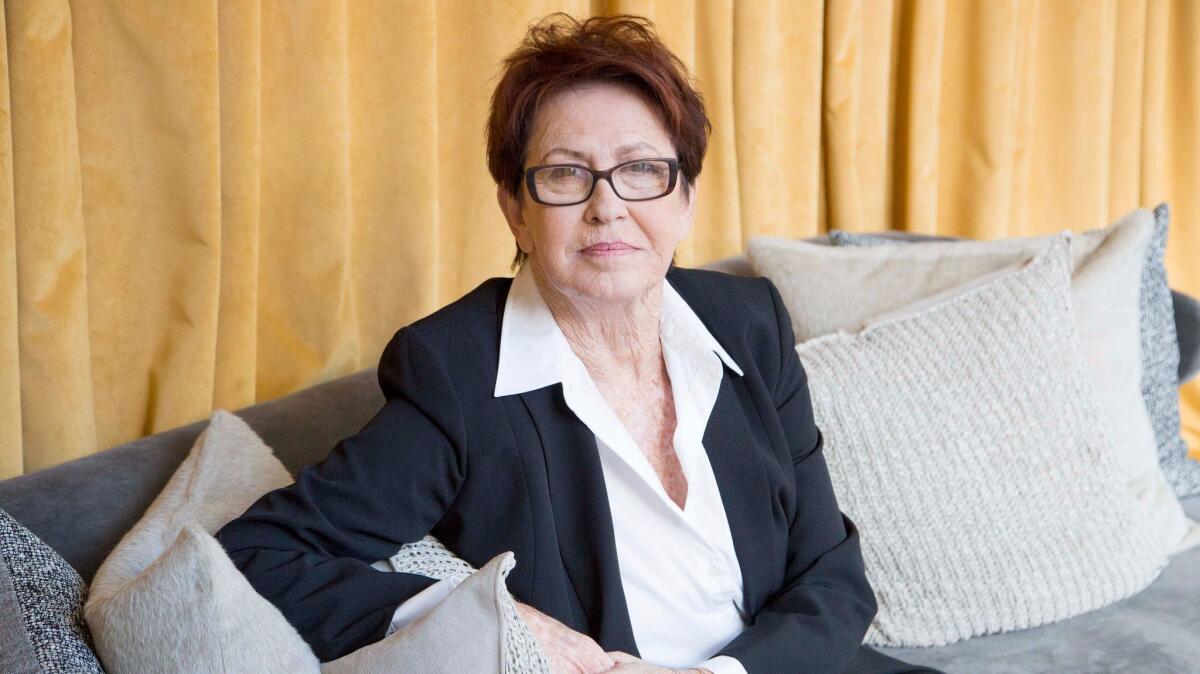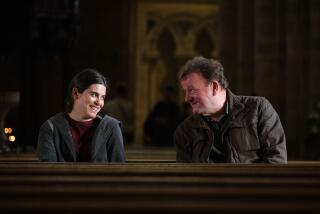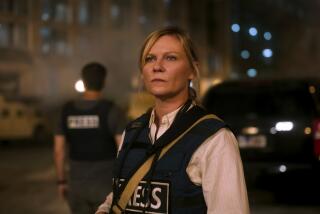Kathryn Bigelow’s ‘Detroit’ takes on a tragedy then — and now

Tucked behind a sleepy tree-lined road, David Senak’s home gives the impression of suburban peace. A welcome flag hangs from the window. The garden is well-tended. On a recent afternoon, young neighbors were having a lacrosse catch.
But the idyll conceals a roiling past. Senak is the ur-symbol of law enforcement run amok. And his bid at a life of quiet anonymity — made clear via a door-slam by a companion when a reporter came knocking — may be reaching an end.
Fifty years ago this week, the former Detroit policeman led a contingent that according to eyewitness testimony rounded up, intimidated, beat and shot an innocent group of mainly African Americans during the city’s 1967 civil unrest. The ordeal, at the Algiers Motel, left three young men dead and many others battered. Senak and his fellow cops never served any jail time, and the incident was little known outside Detroit. In recent years he has led a non-descript life in a predominantly white middle-class community about 45 minutes outside the city.
But the secrecy is now melting away, thanks to a jolting new movie from Oscar winner Kathryn Bigelow (“The Hurt Locker,” “Zero Dark Thirty”) that arrives in theaters Friday in limited release.

“Detroit” trailer starring John Boyega, Will Poulter, Algee Smith, Jason Mitchell and John Krasinski.
Titled “Detroit,” the film takes those events and, with the renamed character of Philip Krauss (played by young British actor Will Poulter), gives new expression to Senak and his cohort’s actions.
Bigelow infuses that summer night with the urgent viscerality of her overseas war films and the racial boldness of early-era Spike Lee. At a moment of national division — between the working and the wealthy, between Black and Blue Lives Matter movements — “Detroit” pushes us in a new direction. It not only offers a fresh read on a familiar sadness but reprograms the way cinema can process tragedy.
By portraying an All-American city that has repeatedly failed to bridge racial divides, where wealth and poverty are sharply delineated by neighborhood and neighborhood by color, the film has an impact greater than its scope. “Detroit” not only illuminates the police-minority dynamic in a Midwestern city circa 1967 — it sheds light on everywhere else right now.
SCARRING RUNS DEEP EVEN FOR THOSE WHO SURVIVED
“So Dismukes would have seen the muzzle flash from there,” Bigelow said, gesturing to a faded office building on Woodward Avenue as she referred to a security guard who was at the scene that night. “And he went to get his gun, and that’s when the police came around and entered here.”
The director is standing on the site of what was once the Algiers, where the three African Americans — Aubrey Pollard, Carl Cooper and Fred Temple — were killed that night.
Re-teaming with her longtime screenwriter Mark Boal, Bigelow starts the story at the beginning. The beginning beginning. A hopeful African American migration from the South to Detroit, the film relates in an animated sequence, soon yields to economic despair, segregated geography and frayed relations with a mostly white police force. The riot/rebellion, is seen in this context; when the first items are taken from a store on July 23, it comes off not as wanton looting but as the pipe-burst of decades of backed-up resentment.
The movie soon arcs to the early hours of July 26 as told by the comprehensive if at times competing accounts of court proceedings, newspaper stories, police reports and (more loosely, as rights were not sold) a book from Pulitzer winner John Hersey. Essentially, on that evening three white policemen — characters based on the 23-year-old Senak as well as the now-deceased Ronald August and Robert Paille —storm the annex after gunshots are said to be coming from its direction.
There they impose a reign of terror on about a half-dozen black men and two white women in a putative search for a gun. (None was ever found.) They make the civilians face a wall for hours, with Krauss in particular threatening, mocking and attacking them as part of a violent power-trip. (He and other officers use a highly cruel interrogation tactic known as the “death game.”) Also present, and morally conflicted, is the black security guard, Melvin Dismukes, played by John Boyega.
The scarring runs deep even for those who survive. That includes an honored Vietnam Veteran named Greene, based on the real-life Robert Greene, who’d come to Detroit from Kentucky looking for work (Anthony Mackie); a bandmate of Temple’s in Motown act the Dramatics named Cleveland Larry Reed (Algee Smith); and two women from Ohio, Julie Hysell (Hannah Murray) and Karen Malloy (Kaitlyn Dever), staying at the Algiers.
Bigelow says she made the movie because she felt events in Ferguson, Mo., left her no moral choice.
I heard this story and it made me realize there was inequity that needed to see the light of day. It happened 50 years ago and yet it felt contemporary.
— Kathryn Bigelow
“The Michael Brown acquittal had just come in, and like many people I had the feeling ‘is this justice? How can this happen?’” she said at an earlier meeting in New York, referring to a grand jury’s decision not to indict police officer Darren Wilson. “And then I heard this story and it made me realize there was inequity that needed to see the light of day. It happened 50 years ago and yet it felt contemporary.”
She and Boal applied the filmmaking techniques and dirt-under-their-fingernails research of “Hurt Locker” and “Zero Dark.” Indeed, the movie is in a sense a third part of a trilogy, a story of Americans at war abroad leading to Americans at war to protect the homeland, then finally giving way to an America at war with itself.
The spot where the Algiers stood is just an overgrown field now, one more hollowed-out space in a neighborhood that has fallen on hard times. There is not even a plaque.
Bigelow would visit this site often in preproduction, even as she wound up shooting in Massachusetts for tax reasons. “It gave us grounding. I would just come here with the art department or the camera department and bring it all to life in my head. It’s hallowed ground, really.” Then she swiveled her head around the innocuous surroundings.
“This is the site of a horrible crime,” she said. “And you’d never know it.”
OFFICERS’ 1967 CRIMES CONTINUE TO ECHO
Julie Delaney, nee Hysell, needed no monument to jog her memory. As she visited the Algiers site one morning this week, she recounted the details like they happened yesterday.
“One of the officers said ‘put your hands up’ and told us to stand up and then he just whacked me upside the head,” she said, describing how the cops stormed into Greene’s room after she and Malloy took shelter there.

People were begging for their lives. I just kept thinking ‘they killed three people, and there’s one person they haven’t taken, then I’m next.’
— Julie Delaney
Delaney, then a teenager, had joined up with Malloy and followed some bands to Detroit that summer of 1967. They were at the Algiers because it cost barely $10 a night. Now in her late 60s and a hairdresser on Hollywood sets, she had come from her home in the South for a rare return trip to where the trauma had occurred.
She took it all in. “Right there is where you registered. And this was the pool. And this was the breezeway between the main building and the annex, where it all happened.”
She let the memories filter through. “People were begging for their lives. I just kept thinking ‘they killed three people, and there’s one person they haven’t taken, then I’m next.’ I remember the voices of the cops yelling, again and again and again.”
She said, “You know, what happens in the movie is like ‘The Smurfs’ compared to what really happened.”
Dismukes said the brutality of the film only hints at what he saw too. “I just want people to know how violent it was — it was so much worse than people think,” he said, in a rare interview at a downtown Detroit hotel.
But what to do with this brutality? Is a situation made better by simply knowing about it? Is the period lens that makes it palatable to an audience also an obfuscating force? Ike McKinnon, one of the few black Detroit police officers in 1967 and later a police chief and deputy mayor, said that much has improved since the unrest, particularly with the integration of the force, but that the city hasn’t overcome its struggles — “that magic combination of black and white, of police and civilians.”
Mackie, who plays Greene, says honesty is lacking everywhere. “One thing we haven’t had is an open conversation about the relationship,” said the actor, one day before he attended a glitzy premiere at the city’s Fox Theatre. “About the fear and hatred black men have toward the police, and the fear and resistance cops have to black men. Police and black men are in a marriage. And unless you’re open, a marriage doesn’t work.”
Detroit is an extreme example of the segregation — economic, cultural, physical — that can divide the country more broadly. Officers’ ability in 1967 not only to commit the crimes but get away with them continues to echo everywhere. (Trials resulted in acquittals or dismissals for the three policemen and Dismukes.) Only the most unplugged would find no connection to current events; only the most anesthetized will leave the theater unjarred.
I’m not trying to be authoritarian and tell people how to feel, but anger is an appropriate response.
— Screenwriter Mark Boal

“I’m not trying to be authoritarian and tell people how to feel, but anger is an appropriate response,” Boal said. “This is something meant to be grappled with.”
But with that grappling could come criticism. Bigelow does say there are moments of fiction, and Boal notes instances of “pure screenwriting.” Some facts are contested within accounts; others were changed for the screen. Does a disclaimer at the end sufficiently cover fictional manipulations in an ostensibly true story?
What’s more, does the film make outliers the norm, alleging a disease of violent racism without proving it? Cinema is an emotional medium and the issue of police brutality at bottom an empiric problem — can an approach that embraces the former address the latter? The questions are as plenty as the accounts of that night. Injustice rarely rings out without interpretation.
ROBERT GREENE REMAINS A MYSTERY
Robert Greene was never found in the making of the film. Bigelow’s team couldn’t track him down, and Mackie never spoke to the veteran. Hersey’s book had him giving an interview about the Algiers as he returned to his native Kentucky. Perhaps he will surface with the release of the film; perhaps he has slipped away in the haze of trauma. For now, at least, he remains a mystery.
Except public records show that a man matching his name and age had in recent years lived at an address in Detroit, in the hardscrabble African American neighborhood of Grandale.
On a blazingly hot recent Saturday, an elderly neighbor sought refuge on a porch. Many of the homes, including the one belonging to Robert Greene, were unoccupied — bombed out, boarded up and falling apart. Some had already burned down or were razed.
Whether the house was occupied by the Greene who survived the Algiers incident or another neglected citizen was in a way beside the point. The riots are not a distant memory here, the stuff of period films to commemorate with premieres at restored theaters in gentrifying downtowns. They are alive, real, present, and just a few dozen miles from Senak’s well-manicured home. Long after the survivors left the Algiers, the divides of that night remain and persist.
ALSO:
Rebellion in Detroit: The real-life events that inspired Kathryn Bigelow’s new film
More to Read
Only good movies
Get the Indie Focus newsletter, Mark Olsen's weekly guide to the world of cinema.
You may occasionally receive promotional content from the Los Angeles Times.







